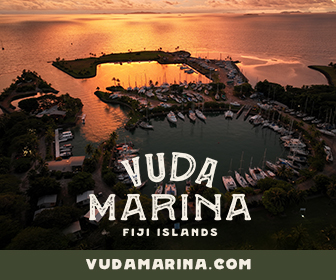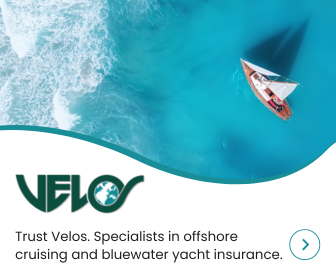INSIGHTS: Coral Gardening Gives Reefs a Helping Hand
Dutch cruisers Floris and Ivar have sailed thousands of nautical miles around the world, investigating local sustainability projects in countries they visit. In French Polynesia they were in awe of the beauty of the coral reefs they saw there. Unfortunately these important ecosystems are under threat but a coral gardening project in Mo’orea is proving that it is possible to restore these vitally important ecosystems.
Published 4 years ago

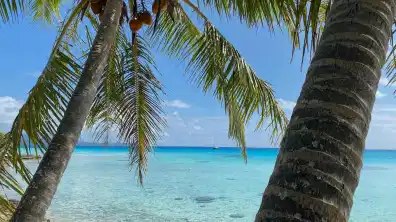
- A postcard coral atoll anchorage
“This whole island is made of coral!” Ivar observes on a walk around Puaumu, an uninhabited island at the outskirts of the Gambier archipelago in French Polynesia. In the distance large ocean rollers pound violently on the reef that rises steeply from the fathomless depths of the Pacific Ocean.
Upon closer inspection of the beach we notice that some pieces of broken coral are quite large. “Fragments of the coral’s skeleton”, Ivar analyses. The smallest pieces have become sand. Its snow-white colour is the reason why the water around the island is so bright blue. In combination with the island’s dark green palm leaves, it makes for a picture-perfect scenery. In the coming weeks we will learn that coral is not only beautiful, but first and foremost of paramount significance for marine life and coastal protection.
The Basis of the Ecosystem
“Our” coral island is home to countless coconut palms. They have taken root and carry many coconuts despite the barren and salty coral soil. Over time, these pioneers have left a layer of fertile biomass on top of the coral, which has enabled other types of plants to grow. The flora, in turn, attracts animal life, such as the bright red hermit crabs that feast on the contents of fallen coconuts. They carry spiral shells on their backs and can easily climb trees. In the trees’ crown nest numerous terns, which we are careful not to disturb. Their droppings, or guano, not only fertilizes the island but also adds nutrients to the sea, which is good news for the coral.
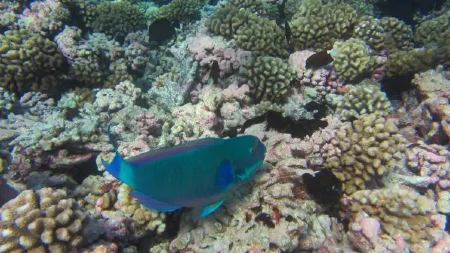

All Colors, Shapes and Sizes
Under water, the coral is alive, literally. We find it in all kinds of colours and shapes, from bonsai to bulb, from cauliflower to tree branch. The seabed close to shore is covered in it. The coral is a marine animal that protects itself with a skeleton of calcium carbonate (CaCO3). To make the skeleton, it removes carbon from the atmosphere in the form of CO2. While corals are slow to grow, over millions of years they have formed gigantic reefs. Rock-hard and razor-sharp, they are the fear of many sailors.
Equipped with snorkels we explore the underwater world. Fish of all colours and sizes, including sharks, swim around large blocks of coral. We are impressed by the enormous biodiversity that has developed on and around the coral. Yet when we want to take a closer look, the smaller fish quickly hide between openings in the coral and observe us from their shelter. It really illustrates how important the coral reefs are for these fish, both as a nursery and as a shelter. We are therefore not surprised to read that coral reefs occupy less than 1 percent of the ocean floor, but are home to more than 25 percent of marine life.

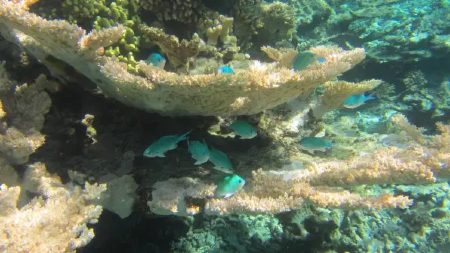
- Fish and their home among the coral
Colourful Team Players
Still with our heads submerged, we hear a soft, grinding sound. It comes from blue-green parrotfish that seem to gnaw on the coral reef. With sturdy beaks resembling those of parrots, they have a special role in the maintenance of the reef. They eat algae which mainly grow on dead coral. This way they limit algae growth while also removing dead coral, which keeps the reefs in good condition. Over the course of a year, they defecate many kilos of fine, white coral sand. Washed-up on shore coconut palms and other plants make good use of the sand to take root, and underwater it provides a habitat for many types of crabs and shrimps. Parrot fish are therefore real team players, with an important role to maintain the health of the entire ecosystem.
Trouble in Paradise
We soon get used to seeing healthy coral and a beautiful, diverse underwater world. In Gambier and the Tuamotus we regularly imagine ourselves in a sea aquarium. We are therefore quite shocked when we snorkel at our anchorage in Mo’orea, a fairly touristic island near Tahiti. The coral is in bad shape; it is brown and overgrown with aquatic plants.

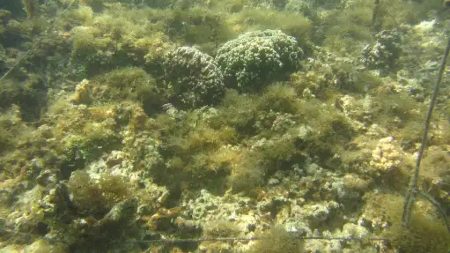
- Dead coral on the seafloor of our anchorage
Unfortunately, we read that the coral quality here corresponds to a broader trend. About 40% of the coral worldwide has died in whole or in part in recent decades. The main causes: warmer and more acidic seawater as a result of climate breakdown, in combination with overfishing and pollution. That’s tragic because coral reefs are incredibly important.
Not only for the biodiversity in the oceans, but also for people. Millions of people depend directly and indirectly on fishing for their livelihoods and food. Tourists flock to the tropical beaches to dive in the beautiful underwater world. Coral reefs also protect the vulnerable coast from storms. The annual total contribution of coral reefs to the economy is estimated to be over $ 30 billion.
Lend the Coral a Hand
Fortunately, there are people in Mo’orea to give ailing coral reefs a helping hand. We meet Taiano Teiho of the NGO “Coral Gardeners”. He explains what drives him and his colleagues and what they try to achieve. “We are a group of 15 young islanders who love the ocean. A few years ago, we decided to do something about the decline of the coral reefs on our island. To tackle the root causes, we run campaigns to raise awareness about the threats to coral reefs, such as in schools and via our social media channels. We also implement a concrete, practical solution locally: the transplanting of coral.”

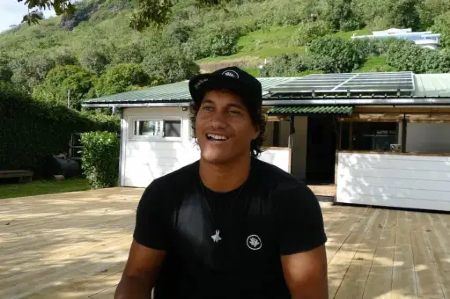
- Taiano and his team are giving coral a helping hand
We are curious how that works exactly, so Taiano continues. “We collect pieces of healthy coral and bring them to a designated area: our coral garden. There we let the coral pieces grow until they are big enough and then transplant them to reefs that are in bad shape. It’s a lot of effort, but it works! In three years, we have already performed more than 14,000 transplants that have made the reefs visibly healthier. And everyone can support us by also adopting a piece of coral via our website!” Of course, we are happy to participate.

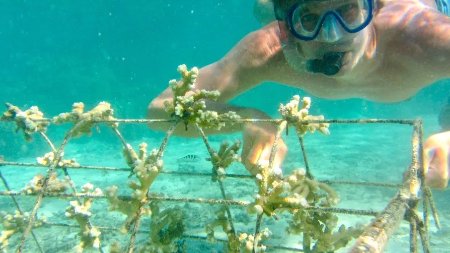
- Ivar checking out the Coral Garden
Ecosystem Restoration is Possible
We get a lot of positive energy from the young islanders of Coral Gardeners. With beautiful images and a smart social media strategy, they have gathered many thousands of followers and received sizeable adoption contributions. In this way, they not only increase awareness about the importance of and threats to coral reefs, but they also work on an actual solution to help these vital yet vulnerable ecosystems recover. In Gambier and on the Tuamotus we have seen with our own eyes that it is not too late for the coral reefs. Everyone can play a role in combating climate disruption, reducing pollution and – via the Coral Gardeners, for example – restoring important ecosystems such as coral reefs. What role do you choose to play?
Watch their video report on the Coral Gardening Project here.
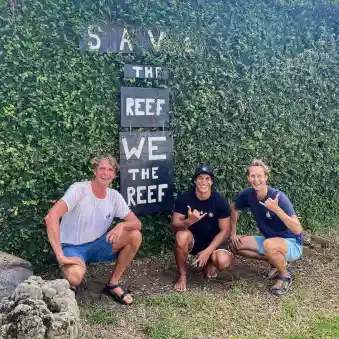
…………………………………………………………………………………………………………………………………..
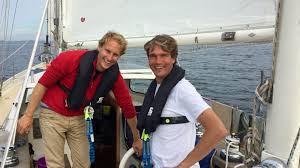

Dutch cruisers Ivar Smits & Floris van Hees gave up busy jobs to circumnavigate the globe with Sustainability being their main goal. They are keen to learn from others worldwide and research and visit as many projects in the countries en route, to take home positive ideas for today’s and tomorrow’s generations.
Ivar and Floris are currently en-route from the Gambiers, French Polynesia to New Zealand, having succesfully obtained permission to enter New Zealand to undertake repair, refit, and maintenance work.
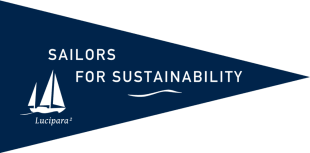

Follow their blog at https://sailorsforsustainability.nl
…………………………………………………………………………………………………………………………………..
Related Articles and Links:
- INSIGHTS: Top 10 Tips to Cruise More Sustainably
- Portrait of a Cruiser – Ivar Smits & Floris van Hees
- Other INSIGHTS
…………………………………………………………………………………………………………………………………..
The opinions expressed in this article are the author’s own and do not reflect the view of Noonsite.com or World Cruising Club.
Related to following destinations: French Polynesia, Gambiers, Marquesas, Moorea, Tahiti
Related to the following Cruising Resources: Circumnavigation, Environment, Insights



